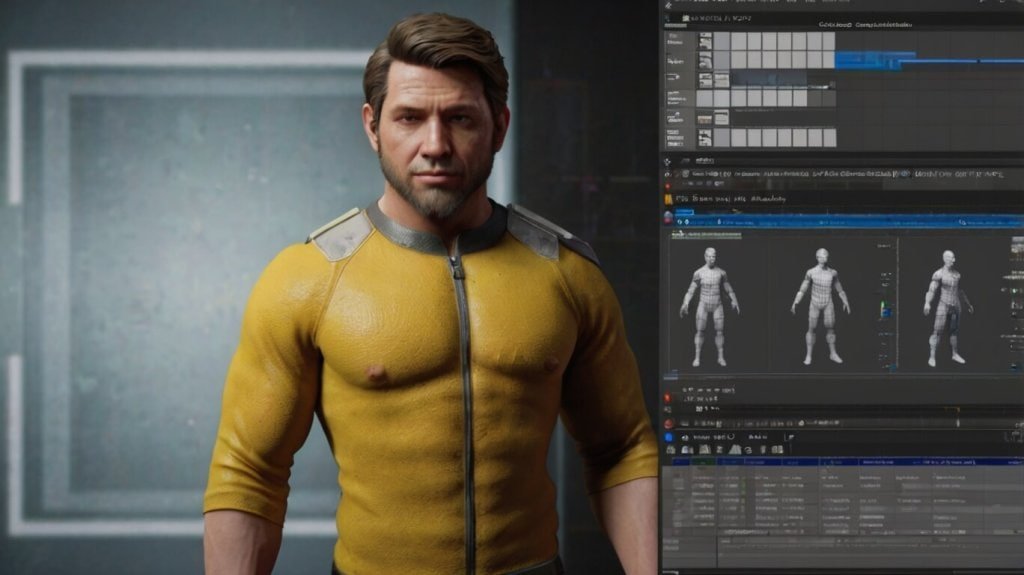You have probably dreamed of creating mindblowing 3D characters that look like those in an AAA game or Pixar movie.
Well then,
There are two tools – ZBrush and 3ds Max, totally a game-changer when used together for character creation.
ZBrush is your sculpting playground. It is the place where imagination is allowed to flow freely, and the conventional modeling rules are set aside. The ZBrush subscription is surprisingly affordable now, making it a no-brainer if you’re serious about digital sculpting.
Next comes 3ds Max (2025 Version), the Swiss Army knife of 3D design. It has new tools, polished features, and updates that will blow your mind (we are talking color management with OCIO, a refined search system, and retopology improvements that make the cleanup work feel a breeze).
Let’s break it down—step-by-step.
Step 1: Start with a Concept
Write down your idea before you lay your finger on a mouse or stylus. Building a knight? An alien? Superhero squirrel? Sketch it out on paper or digitally. This is your roadmap.
Consider facial expression, posture, and body type. All of that will go into the sculpt.
Step 2: Dive Into ZBrush for Sculpting
Here is where the magic is.
Open ZBrush and build out a rough structure with ZSpheres or DynaMesh. Don’t stress about the fine details for now — focus on getting the silhouette and proportions right first. Think of this like molding clay.
Then enter into Sculptris Pro mode and begin to carve in detail. Clothing, facial features, muscles go crazy. Utilize such tools as:
- Move for shaping
- Clay Buildup for volume
- Dam Standard for sharp creases
- ZRemesher to keep your mesh clean
Feel free to texture when you sculpt? ZBrush’sPolypaint lets you paint directly on your model with zero UV setup. Quick and easy to use—ideal for rough color concepts.
Step 3: Retopologize and Export
When your model appears sharp, it is time to turn it into a game or animation-ready model. You can use ZRemesher to automatically clean up or export your mesh and import in 3ds Max 2025 to have more control.
To get into the area of animation, be sure that your model has clean edge loops and geometry. This is where Retopology Tools for 3ds Max 1.5 really prove their value. They now allow you to do OpenVDB remeshing and preprocessing, which creates clean, effective meshes more quickly than ever.
Step 4: Texture and UV Mapping in 3ds Max
With your retopologized model, jump into unwrapping and texturing.
The texturing tools in 3ds Max are more intuitive now, especially with better material previews and Arnold integration. Create your UVs, drop on base colors, and then layer in detail like fabric grain, dirt, scars—whatever makes your character feel alive.
Need high-res maps from your sculpt? Export normal and displacement maps from ZBrush, then apply them in Max using Arnold for photo-real results.
Step 5: Rigging and Animation Prep
If your character’s going to move, rigging is next. 3ds Max makes this easier with skinning tools and bone systems that feel more responsive than before. Set up basic controllers, test deformations, and make sure everything bends and stretches the way it should.
You can also preview animation right, so you’re not flying blind before bringing it into a game engine or render farm.
Step 6: Render and Present
Now for the part that makes jaws drop—final rendering.
3ds Max ships with Arnold 7.3.0.0, which means you get gorgeous lighting, shadows, and material realism right out of the box. Play with light rigs, HDRI environments, and depth of field to add polish. Your 3D character deserves the spotlight—literally.
Export high-res stills or turntables for your portfolio, social media, or pitch deck. With the right setup, your work will look like it belongs on the big screen.
Final Word
Crafting high-end 3D characters is no longer limited to professional studios. With such tools, you’ve got everything you need to go pro, right from your bedroom setup.
And it won’t cost you your entire paycheck. With smart subscriptions, streamlined updates, and better user experiences than ever, the barrier to entry is lower—and the creative potential is higher.
FAQs
Q: How much does ZBrush cost now?
A: The current ZBrush Annual subscription starts at $279. There are also flexible monthly payment plans.
Q: Is 3ds Max 2025 beginner-friendly?
A: Yes, especially with the new global search system and menu editor. It’s easier to find tools, customize your UI, and jump in—even if you’re new.
Q: Can I use ZBrush and 3ds Max together easily?
A: Totally. They integrate well with each other and most major pipelines. ZBrush for sculpting, Max for cleanup, rigging, and rendering is a killer combo.
